
|
Scooped by
Ana Cristina Pratas
onto Digital Delights July 21, 2017 6:26 AM
|
Get Started for FREE
Sign up with Facebook Sign up with X
I don't have a Facebook or a X account

 Your new post is loading... Your new post is loading...
 Your new post is loading... Your new post is loading...
Ana Cristina Pratas's insight:
Nabila bruno's curator insight,
April 26, 2023 2:20 AM
acquista subutex online acquista subutex online
The post reflects on metaphors used to discuss artificial intelligence, particularly introducing an origami analogy. It emphasises that AI outputs are intricately shaped by the training data like origami models are formed from a single sheet of paper. This analogy reveals insights into AI's limitations, creativity, and the nature of its outputs.
"This site is a resource designed for educators by educators, created to support the productive and responsible use of generative artificial intelligence in teaching and learning at the University of Sydney and beyond.
This site complements our 'AI in EducationLinks to an external site.' site which is designed for students by students, and contains resources and advice."
From
www
Commentary on Stephen's Web ~ On Ethical AI Principles by Stephen Downes. Online learning, e-learning, new media, connectivism, MOOCs, personal learning environments, new literacy, and more
From
teachonline
"Each Snapshot of Teaching is defined by three characteristics: it builds on and challenges traditional methods
From
leonfurze
This post initiates a nine-article series revisiting the "Teaching AI Ethics" resources from 2023 exploring bias in GenAI.
Two studies show that many college students are offloading higher order thinking to AI, asking chatbots to do hard work for them.
From
teachonline
A flood of AI-generated content It’s a fact that AI is capable of producing convincing and often useful text and other content. Yes, there are concerns about the quality, accuracy and even the environmental impact of that content, but there’s no doubt AI can produce it and that it is already widespread. It is legitimate to ask now whether any piece of content was authored
"The AI Assessment Scale (AIAS) was developed by Mike Perkins, Leon Furze, Jasper Roe, and Jason MacVaugh. First introduced in 2023 and updated in Version 2 (2024), the Scale provides a nuanced framework for integrating AI into educational assessments."
Discover adaptable active learning strategies to boost student engagement in both traditional classrooms and asynchronous online courses.
From
teachonline
"(...) I think challenges around the relevance and value of higher education are going to be compounded by AI. Many tasks performed by people in many jobs are going to be satisfactorily accomplished by AI agents (as we can already see). For example, if you've got a team of salespeople who are doing cold calling, outbound lead generation, you're going to replace most, if not all, of those people with AI agents, as companies are already doing. The whole ecosystem of higher education as we understand it now has to change.
Other parts of the ecosystem are changing dramatically, and ecosystems have to stay in balance or bad things happen. Imagine if higher education hadn’t changed in response to the Internet? Imagine if we still stood in lines with cards to register for classes, etc. I think many people don’t appreciate how much about higher education changed because of the Internet. It will change more because of AI. "
Hey, y’all, I think I have this whole ‘AI in education’ thing figured out. Am I doing this right? |
Learn how AI prompting can foster critical thinking in students. Discover strategies for teaching prompt engineering, evaluating AI-generated content, and integrating AI ethically into coursework.
(image is a Bryan Mathers sketch of my keynote) As I mentioned in my last post, I gave a keynote at the Education After the Algorithm conference in Dublin last week. It was a thoughtful, engaging event, congrats to Eamon Costello and all involved.
Discover how integrating systems thinking and learner-centered teaching enhances liberal arts education through interdisciplinary and holistic learning strategies.
From
www
Commentary on Stephen's Web ~ Your Brain on ChatGPT: Accumulation of Cognitive Debt when Using an AI Assistant for Essay Writing Task by Stephen Downes. Online learning, e-learning, new media, connectivism, MOOCs, personal learning environments, new literacy, and more
Discover how starting class with paradoxes—not content—ignites curiosity, deepens learning, and transforms classroom engagement.
As part of my PhD studies, I read and write a lot of stuff that doesn’t really fit into my research, but which I find interesting anyway. I’m categorising these “spare parts” on my blog, and if you’re interested in following them you’ll find them all here. I’ve written a fair bit about AI ethics, […]
From
teachonline
Educators play a critical role in helping students succeed with their online studies. This new list of resources curated from the websites of Ontario's 24 colleges, 25 universities and 9 Indigenous Institutes is a comprehensive guide designed to support students in their online learning journey.
Given this reality in which AI can provide and synthesize information for and to our students at their requests in seconds, it is not completely paranoid to ask the question, “What can we, as college instructors, offer our students in the age of AI?”
Abstract
From
fltmag
By Roberta Montella and Dan Nickolai, Saint Louis University DOI: https://www.doi.org/10.69732/RVZW4726 One of the most time-consuming tasks of lesson planning is the preparation of pedagogical resources for our language courses. This is especially true when it comes to modifying or
As students and educators adapt to digital platforms, student engagement has emerged as a key concern in online learning. Two such approaches—microlearning and andragogy—offer promising solutions to enhance student engagement and knowledge retention.
"One major complaint about the use of AI to generate articles and answers to real-world questions is that it “hallucinates” — that is, it makes up facts that aren’t true and creates references to articles that don’t exist.
Although AI models like ChatGPT have improved in performing basic mathematics, they can still make errors, especially with more complex calculations. And they sometimes provide information that is imprecise or outdated when answering questions about the world. (...)
The problem today isn’t that we can’t depend on computers. In fact, we can’t depend on any media without a system of fact-checking, critical thinking and trust. The problem is that, up to now, we have been able to depend on computers. And now this trust has been broken. The real question is, how will we get that trust back again?" |

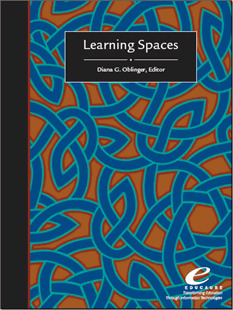






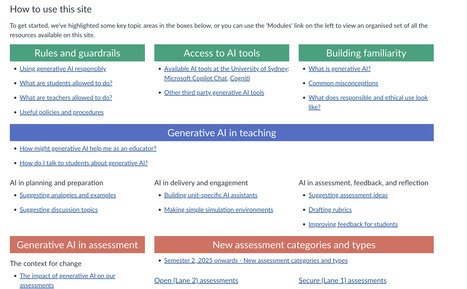









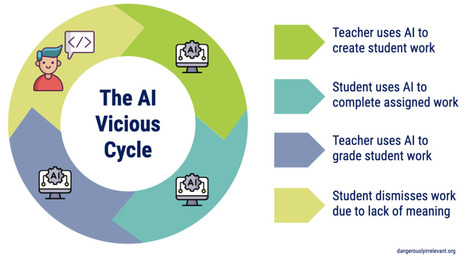




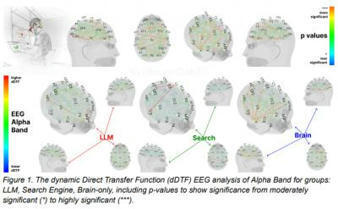


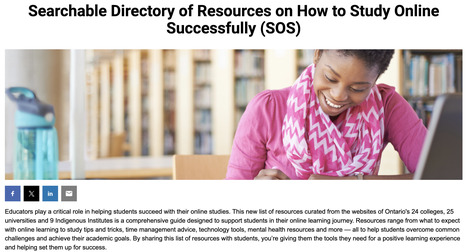
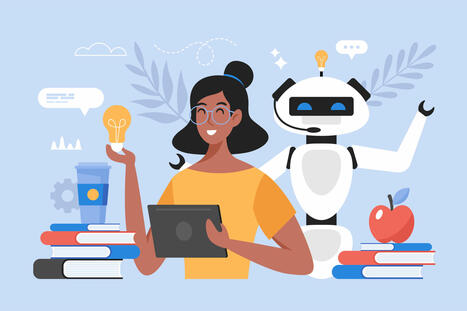
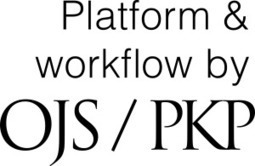








Table of Contents
Foreword
by Diana G. Oblinger
PDF
PART 1: Principles and Practices
Chapter 1. Space as a Change Agent
by Diana G. Oblinger
View: HTML | PDF
Chapter 2. Challenging Traditional Assumptions and Rethinking Learning Spaces
by Nancy Van Note Chism
View: HTML | PDF
Chapter 3. Seriously Cool Places: The Future of Learning-Centered Built Environments
by William Dittoe
View: HTML | PDF
Chapter 4. Community: The Hidden Context for Learning
by Deborah J. Bickford and David J. Wright
View: HTML | PDF
Chapter 5. Student Practices and Their Impact on Learning Spaces
by Cyprien Lomas and Diana G. Oblinger
View: HTML | PDF
Chapter 6. The Psychology of Learning Environments
by Ken A. Graetz
View: HTML | PDF
Chapter 7. Linking the Information Commons to Learning
by Joan K. Lippincott
View: HTML | PDF
Chapter 8. Navigating Toward the Next-Generation Computer Lab
by Alan R. Cattier
View: HTML | PDF
Additional Resource: Cox Hall Panorma
Chapter 9. Trends in Learning Space Design
by Malcolm Brown and Phillip D. Long
View: HTML | PDF
Chapter 10. Human-Centered Design Guidelines
by Lori Gee
View: HTML | PDF
Chapter 11. Designing Blended Learning Space to the Student Experience
by Andrew J. Milne
View: HTML | PDF
Chapter 12. Sustaining and Supporting Learning Spaces
by Christopher Johnson
View: HTML | PDF
Chapter 13. Assessing Learning Spaces
by Sawyer Hunley and Molly Schaller
View: HTML | PDF
PART 2: Case Studies
Chapter 14. Learning How to See
Diana G. Oblinger
View: HTML | PDF
Chapter 15. City of London: Sir John Cass Business School
Clive Holtham
View: HTML | PDF
Chapter 16. Denison University: MIX Lab
Scott Siddall
View: HTML | PDF
Chapter 17. Duke University: Perkins Library
Marilyn M. Lombardi and Thomas B. Wall
View: HTML | PDF
Chapter 18. Eckerd College: Peter H. Armacost Library
J. Michael Barber
View: HTML | PDF
Chapter 19. Estrella Mountain Community College: The Learning Studios Project
Homero Lopez and Lori Gee
View: HTML | PDF
Chapter 20. Hamilton College: Science Center
Nikki Reynolds and Douglas A. Weldon
View: HTML | PDF
Chapter 21. Indiana University-Purdue University Indianapolis: The ES Corridor Project
Nancy Van Note Chism
View: HTML | PDF
Chapter 22. Iowa State University: LeBaron Hall Auditorium
Jim Twetten
View: HTML | PDF
Additional Resource: VR tour of LeBaron Hall Auditorium
Chapter 23. London School of Economics: BOX
Andrew Harrison
View: HTML | PDF
Chapter 24. Messiah College: Boyer Hall
Dennis Lynch
View: HTML | PDF
Chapter 25. Michigan Technological University: Center for Integrated Learning and Information Technology
Paul Urbanek
View: HTML | PDF
Chapter 26. MIT: The Brain and Cognitive Sciences Complex
Phillip D. Long
View: HTML | PDF
Chapter 27. MIT: Steam Café
Scott Francisco
View: HTML | PDF
Chapter 28. North Carolina State University: Flyspace
Hal Meeks
View: HTML | PDF
Chapter 29. North Carolina State University: SCALE-UP
Robert Beichner
View: HTML | PDF
Chapter 30. Northwestern University: Information Commons
Bob Davis and Denise Shorey
View: HTML | PDF
Chapter 31. Ohio State University: Digital Union
Victoria Getis, Catherine Gynn, and Susan E. Metros
View: HTML | PDF
Chapter 32. Olin College of Engineering: Academic and Olin Centers
Joanne Kossuth
View: HTML | PDF
Chapter 33. Pennsylvania State University: Smeal College of Business
Peter Nourjian
View: HTML | PDF
Chapter 34. St. Lawrence University: Center for Teaching and Learning
Sondra Smith and Kim Mooney
View: HTML | PDF
Additional Resource: Web sidebar, Table 1, Table 2, Table 3
Chapter 35. Stanford University: GroupSpaces
Richard Holeton
View: HTML | PDF
Chapter 36. Stanford University: Wallenberg Hall
Dan Gilbert
View: HTML | PDF
Chapter 37. University of Arizona: Manuel Pacheco Integrated Learning Center
Christopher Johnson
View: HTML | PDF
Chapter 38. University of British Columbia: Irving K. Barber Learning Centre
Simon Neame and Cyprien Lomas
View: HTML | PDF
Chapter 39. University of Central Florida: Collaboration and Multimedia Classrooms
Ruth Marshall
View: HTML | PDF
Chapter 40. University of Chicago: USITE/Crerar Computing Cluster and Cybercafé
Shirley Dugdale and Chad Kainz
View: HTML | PDF
Additional Resource: Web sidebar
Chapter 41. University of Georgia: Student Learning Center
William Gray Potter and Florence E. King
View: HTML | PDF
Chapter 42. Virginia Tech: Math Emporium
Barbara L. Robinson and Anne H. Moore
View: HTML | PDF
Chapter 43. Virginia Tech: Torgersen Hall
J. Thomas Head and Anne H. Moore
View: HTML | PDF
Additional Resource: Video interviews with Virginia Tech professors Carol Burch-Brown[12MB WMV] and Kerry J. Redican [4MB WMV] about teaching in Torgersen Hall
Index
View: PDF